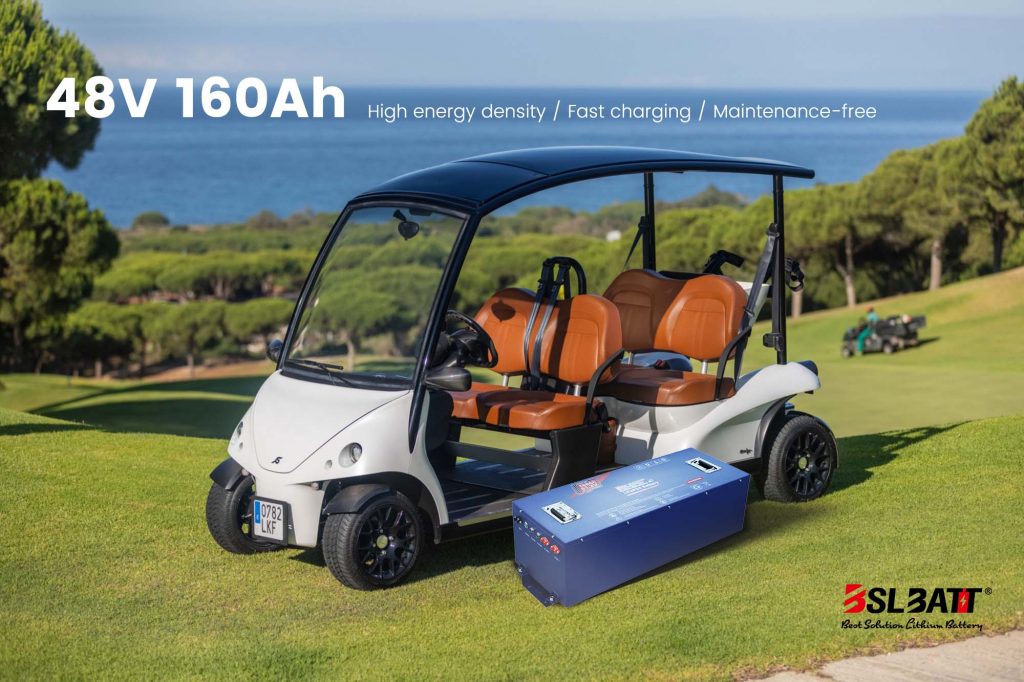Industry Application
Product Type
Lithium Ion Batteries and Their Manufacturing Challenges
| Lithium Ion Batteries and Their Manufacturing Challenges
Lithium ion batteries are manufactured in sets of electrodes and then assembled in cells. Active material is mixed with polymer binders, conductive additives, and solvents to form a slurry that is then coated on a current collector foil and dried to remove the solvent and create a porous electrode coating. There is no single lithium ion battery. With the variety of materials and electrochemical couples available, it is possible to design battery cells specific to their applications in terms of voltage, state of charge use, lifetime needs, and safety. Selection of specific electrochemical couples also facilitates the design of power and energy ratios and available energy. Integration in a large format cell requires optimized roll-to-roll electrode manufacturing and use of active materials. Electrodes are coated on a metal current collector foil in a composite structure of active material, binders, and conductive additives, requiring careful control of colloidal chemistry, adhesion, and solidification. But the added inactive materials and the cell packaging reduce energy density. Moreover, degree of porosity and compaction in the electrode can affect battery performance. In addition to these materials challenges, cost is a significant barrier to widespread adoption of this technology. Pathways are being explored to bring batteries from the commercially available 100 Wh/kg and 200 Wh/L at $500/kWh up to 250 Wh/kg and 400 Wh/L for just $125/kWh. Fundamentals of Lithium Ion Batteries The lithium ion battery was made possible by the discovery of lithium cobalt oxide (LiCoO2), which allows the extraction of lithium ions and creation of large amounts of vacancies (without a crystal change) up to the removal of half of the existing ions. The pairing of LiCoO2 with graphite allows the intercalation of lithium ions between the graphene layers that occupy the interstitial site between every hexagonal ring of carbon atoms (Besenhard and Schöllhorn 1976; Mizushima et al. 1980; Whittingham 1976). The lithium ions travel during charge from the positive electrode (the cathode) through a solid or liquid electrolyte to the negative electrode (the anode) and, during discharge, in the opposite direction. At each electrode, the ion either maintains its charge and intercalates into the crystal structure occupying interstitial sites in existing crystals on the anode side or reoccupies a vacant site in the cathode that formed when the lithium ion left that crystal. While transferring the ion, the host matrix gets reduced or oxidized, which releases or captures an electron.1 Variety of Cathode Materials The search for new cathode materials is driven in part by important disadvantages of LiCoO2. The battery has a core temperature of 40–70°C and may be susceptible to some low-temperature reactions. But at 105–135°C it is very reactive and an excellent oxygen source for a safety hazard called a thermal runaway reaction, in which highly exothermic reactions create temperature spikes and accelerate rapidly with the release of extra heat (Roth 2000). Replacement materials for LiCoO2 are less prone to that failure. The compounds replace parts of the cobalt with nickel and manganese to form Li(NixMnyCoz)O2compounds (with x + y + z = 1), often referred to as NMC as they contain nickel, manganese, and cobalt; or they exhibit a completely new structure in the form of phosphates (e.g., LiFePO4) (Daniel et al. 2014). These cathode materials all exhibit capacities in the range of 120–160 Ah/kg at 3.5–3.7 V, resulting in maximum energy density of up to 600 Wh/kg. When packaged in real devices, however, much inactive material mass is added and the energy density tends to drop to 100 Wh/kg on the pack level. To push for higher energy density, researchers have sought higher capacity and higher voltage—and found them in lithium- and manganese-rich transition metal oxides. These compounds are essentially the same materials as NMC but an excess of lithium and higher amounts of manganese replace nickel and cobalt. The higher amounts of lithium (as much as 20 percent more) allow the compounds to have higher capacity (Thackeray et al. 2007) and a higher voltage, resulting in cathodes with up to 280 Ah/kg when charged up to 4.8 V. However, these new compounds show stability problems and tend to fade fast. Balancing of Materials in Cells Lithium ion batteries are made of layers of porous electrodes on aluminum and copper current collector foils (Daniel 2008). The capacity of each electrode pair needs to be balanced to ensure battery safety and avoid risk of overcharge of the anode (which can result in lithium metal plating and short circuiting) or overdischarge of the cathode (which can result in a collapse of the crystal structure and loss of vacancies for lithium to reintercalate, dramatically reducing capacity). Graphite has a theoretical capacity of 372 Ah/kg, double that of the available lithium in NMC cathodes. So in balanced lithium ion batteries, the cathodes typically exhibit double the thickness compared to the anode. This inherent flaw of the cell design causes problems with mass transport and kinetics, and thus prompted the search for high-capacity cathodes. To increase cell-level energy density, inactive materials are being minimized in battery cells. For example, one way to reduce the current collector is to increase the thickness of the electrodes, but this further drives transport problems and requires a highly engineered porosity in the electrode. Cost Challenges in Manufacturing Lithium Ion Batteries The costs of lithium ion batteries are much higher than the automotive market will bear for full penetration of electric vehicles and a cost-neutral product compared to cars run by internal combustion engines. The US Department of Energy cost target for all electric vehicle batteries is $125/kWh of usable energy (DOE 2013). The current cost of commercial batteries is $400–500/kWh and their projected cost with current experimental materials is $325/kWh. Most of the cost reduction thus far has been achieved by energy density increases at similar cost to the older-generation products. Further cost reduction is possible through optimization of manufacturing schemes. Lithium ion batteries are manufactured in sets of electrodes and then assembled in cells. Active material is mixed with polymer binders, conductive additives, and solvents to form a slurry that is then coated on a current collector foil and dried to remove the solvent and create a porous electrode coating. The solvent of choice, N-methylpyrrolidone (NMP), is considered an indirect material (it is needed for production but not contained in the final device), but it is expensive, exhibits flammable vapors, and is highly toxic. The flammable vapors of NMP require all processing equipment during the production of electrodes to be explosion proof, meaning all spark-producing electrical components need to be shielded from the vapors and spaces need to be highly ventilated to keep vapor concentrations low. These measures increase the capital cost of such equipment considerably. In addition, the electrode manufacturing plant is required to recapture the solvent from its exhaust stream, distill it, and recycle it. This is again an additional cost. Cost Reduction by Water-based Processing The replacement of NMP by water is a tremendous opportunity to reduce cost in the production of lithium ion batteries. The cost of water is negligible compared to that of NMP; water is not flammable and does not produce flammable vapors; and water is environmentally benign. However, water is a polar solvent and its behavior is completely different from that of the nonpolar NMP. Furthermore, active materials tend to agglomerate and metal current collector surfaces are hydrophobic, making the coating process more difficult. Knowledge of surface charges on particles (by measuring zeta potential) enables the design of surface polarity in the presence of water by introducing small amounts of surfactants. In the case of cathode intercalation compounds, polyethylene imide has been successfully used to introduce a surface charge large enough to repel particles so that they do not form unacceptable agglomerates (Li et al. 2013). Understanding the surface energy of metals and the surface tension of the slurry as well as their interaction allows for optimization of the pair. Atmospheric plasma treatment of the metal surface through exposure to a corona plasma removes organic compounds on the surface and enables a slight etching and oxidation, which dramatically reduces the surface energy to values below the surface tension of the slurry. This allows perfect wetting of the surface by the slurry and creates a coating with optimized adhesion (Li et al. 2012). The result is a 75 percent operational and materials cost reduction in the electrode manufacturing and a potential cost reduction of up to 20 percent at the battery pack level for automotive applications (Wood et al. 2014). This does not include the lower equipment cost: expenses associated with the plasma processing equipment are much lower than those for the solvent recovery system and the explosion-proof requirement. Future Opportunities for Cost Reduction Further cost reductions will be achieved through greater knowledge of transport mechanisms and electrode architecture implications for electrochemical performance. Current research is largely focused on modeling and simulation to understand molecular mechanisms and improve the design of electrodes, electrode stacks, and battery cells. Thicker electrodes and a tremendous reduction in inactive materials will improve energy density at lower cost, reduce direct costs, and possibly enable much shorter and less energy intensive battery formation cycling. Conclusion Lithium ion batteries have tremendous potential for enabling partial to full electrification of the automotive fleet, diversifying energy sources for transportation, and supporting large-scale energy storage for a higher penetration of intermittent renewable energy supply. However, cost continues to be an issue and will need to be addressed by the development of a robust supply chain, standards in manufacturing, high manufacturing throughput, and streamlined low-cost processing methods. In addition to reducing costs, research can enhance knowledge of molecular processes and transport issues in order to optimize the design and use of available energy in batteries and increase their life time. As shown in this paper, an increase in energy content and capacity in active electrode materials and a reduction of indirect materials in production are two ways to impact cost. Acknowledgments Parts of this research at Oak Ridge National Laboratory (ORNL; managed by UT Battelle, LLC) for the US Department of Energy (under contract DE-AC05-00OR22725) were sponsored by the Office of Energy Efficiency and Renewable Energy (EERE) Vehicle Technologies Office (VTO) Applied Battery Research (ABR) subprogram (program managers: Peter Faguy and David Howell). The author acknowledges many fruitful discussions with and contributions from David Wood, Jianlin Li, and Debasish Mohanty of the DOE Battery Manufacturing R&D Facility at ORNL and Beth Armstrong in ORNL’s Materials Science and Technology Division. Article source:Spring Bridge:From the Frontiers of engineering and beyond |
A Guide to Choosing the Best 48V Lithium Golf Cart Battery
Would it be worth investing in a 48V ...
10 Exciting Ways To Use Your 12V Lithium Batteries
Back in 2016 when BSLBATT first began designing what would become the first drop-in replacemen...
BSLBATT Battery Company Receives Bulk Orders from North American Customers
BSLBATT®, a China Forklift battery manufacturer specializing in the material handling indust...
Fun Find Friday: BSLBATT Battery is coming to another great LogiMAT 2022
MEET US! VETTER’S EXHIBITION YEAR 2022! LogiMAT in Stuttgart: SMART – SUSTAINABLE – SAF...
Looking for new Distributors and Dealers for BSL Lithium Batteries
BSLBATT battery is a fast-paced, high-growth (200% YoY ) hi-tech company that is leading the a...
BSLBATT to Participate at MODEX 2022 on March 28-31 in Atlanta, GA
BSLBATT is one of the largest developers, manufacturers, and integrators of lithium-ion batter...
What makes the BSLBATT the Superior Lithium Battery for your Motive Power needs?
Electric forklift and Floor Cleaning Machines owners who seek the ultimate performance will fi...





























